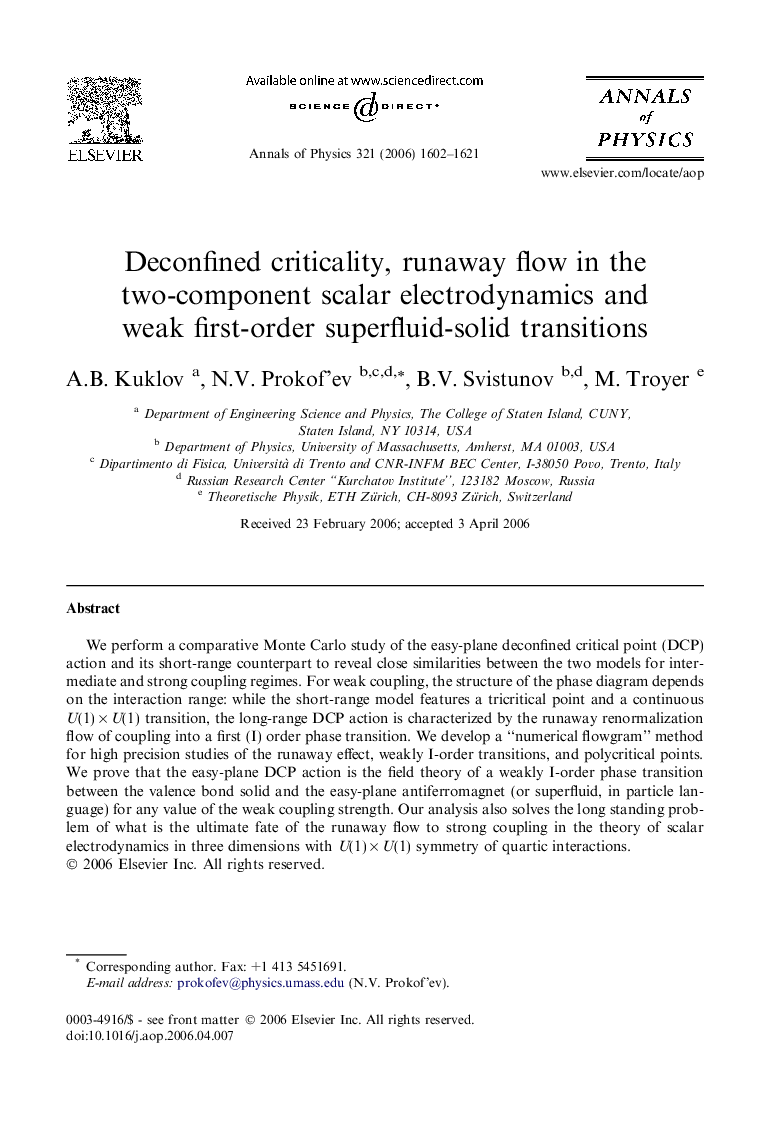| Article ID | Journal | Published Year | Pages | File Type |
|---|---|---|---|---|
| 1855451 | Annals of Physics | 2006 | 20 Pages |
Abstract
We perform a comparative Monte Carlo study of the easy-plane deconfined critical point (DCP) action and its short-range counterpart to reveal close similarities between the two models for intermediate and strong coupling regimes. For weak coupling, the structure of the phase diagram depends on the interaction range: while the short-range model features a tricritical point and a continuous U(1)Â ÃÂ U(1) transition, the long-range DCP action is characterized by the runaway renormalization flow of coupling into a first (I) order phase transition. We develop a “numerical flowgram” method for high precision studies of the runaway effect, weakly I-order transitions, and polycritical points. We prove that the easy-plane DCP action is the field theory of a weakly I-order phase transition between the valence bond solid and the easy-plane antiferromagnet (or superfluid, in particle language) for any value of the weak coupling strength. Our analysis also solves the long standing problem of what is the ultimate fate of the runaway flow to strong coupling in the theory of scalar electrodynamics in three dimensions with U(1)Â ÃÂ U(1) symmetry of quartic interactions.
Related Topics
Physical Sciences and Engineering
Physics and Astronomy
Physics and Astronomy (General)
Authors
A.B. Kuklov, N.V. Prokof'ev, B.V. Svistunov, M. Troyer,
